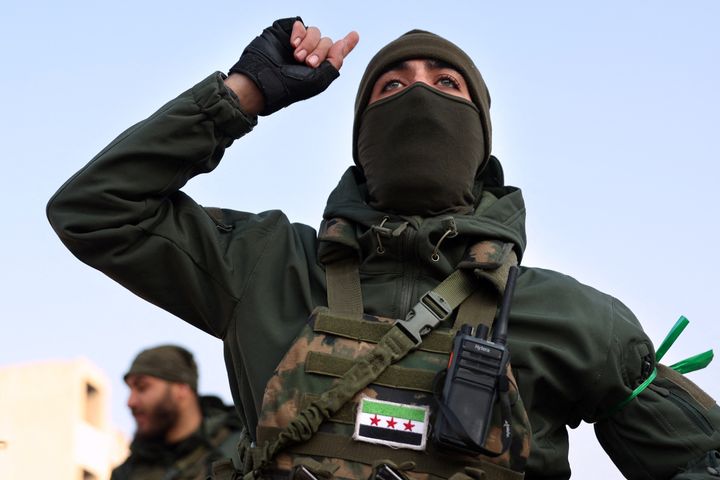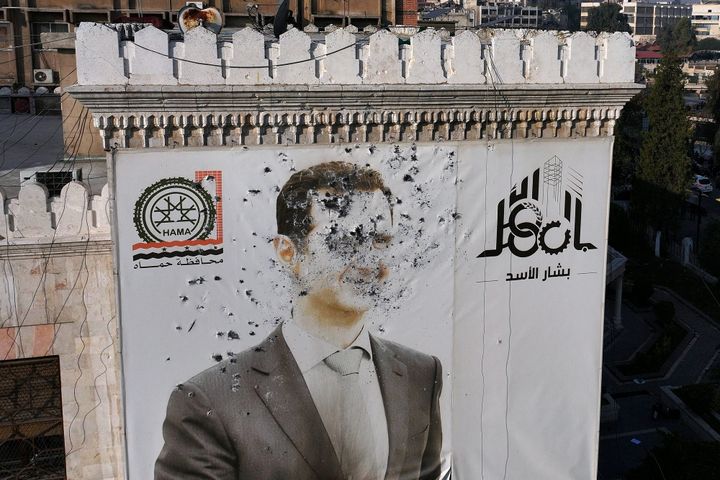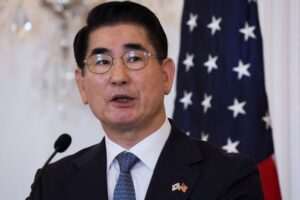Is Assad’s Rule In Syria At Risk Of Collapse?
Alone and broke against a renewed insurgency, Bashar Assad’s hold on power faces its stiffest test in a decade.


BEIRUT (AP) — The last time Syrian President Bashar Assad was in serious trouble was 10 years ago, at the height of the country’s civil war, when his forces lost control over parts of the largest city, Aleppo, and his opponents were closing in on the capital, Damascus.
Back then, he was rescued by his chief international backer, Russia, and longtime regional ally Iran, which along with Lebanon’s powerful Hezbollah militia helped Assad’s forces retake Aleppo, tipping the war firmly in his favor.
Now, as insurgents pursue a shock offensive that quickly captured not just Aleppo, but the key city of Hama and a string of other towns across the country’s northwest, the Syrian leader appears to be largely on his own.
Russia is preoccupied with its war in Ukraine, and Hezbollah, which at one point sent thousands of its fighters to shore up Assad’s forces, has been weakened by a yearlong conflict with Israel. Iran, meanwhile, has seen its proxies across the region degraded by Israeli airstrikes.
Moreover, Syrian troops are exhausted and hollowed out by 13 years of war and economic crises, with little will left to fight.
So will Assad’s rule collapse in the near future?
“The coming days and weeks will be critical in determining whether the rebel offensive poses an existential threat to the Assad regime or whether the regime manages to regain its footing and push back on recent rebel gains,” said Mona Yacoubian, an analyst with the United States Institute for Peace.
“While weakened and distracted, Assad’s allies are unlikely to simply cave to the rebels’ offensive,” she wrote in an analysis.
Not out of the woods
Until recently, it seemed that Syria’s president was almost out of the woods. He never really won the long-running civil war, and large parts of the country were still outside his control.
But after 13 years of conflict, it appeared that the worst was over and that the world was ready to forget. Once viewed as a regional pariah, Assad saw Arab countries warming up to him again, renewing ties and reinstating Syria’s membership in the Arab League. Earlier this year, Italy also decided to reopen its embassy in Damascus after a decade of strained relations.

In the aftermath of one of the world’s largest humanitarian crises, aid groups and international donors in Syria began pivoting toward spending more on the country’s recovery than on emergency assistance, providing a lifeline for Syrians and restoring basic services.
But then the sudden offensive launched by insurgents on Nov. 27 reignited the war and caught everyone off guard with its scope and speed.
It also left Syria’s neighbors anxious, wary that violence and refugees could spill across borders and worried about the growing influence of Islamist groups, a major concern for most of Syria’s Arab neighbors.
Geopolitical shifts
Analysts say a confluence of geopolitical developments beginning with Russia’s invasion of Ukraine in February 2022, followed by the Israel-Hamas war in Gaza that started on Oct. 7, 2023, helped create the opportunity for Assad’s opponents to pounce.
As the rebels advanced this past week, Syrian forces appeared to melt away, putting up no resistance, with several reports of defection. Russian forces carried out occasional airstrikes. Hezbollah’s leader in Lebanon said the group will continue to support Syria, but made no mention of sending fighters again.
“The rebel assault underscores the precarious nature of regime control in Syria,” Yacoubian wrote.
“Its sudden eruption and the speed with which rebel groups managed to overtake Aleppo … expose the complex dynamics that reside just below the surface in Syria and can transform superficial calm into major conflict.”
Aron Lund, a Syria expert with Century International, a New York-based think tank and a researcher with the Swedish Defense Research Agency, said the developments in Syria are a geopolitical disaster for Russia and Iran.

“They too were surely surprised by what happened, and they have all sorts of resource constraints,” including Russia’s war in Ukraine and Hezbollah’s losses in Lebanon and Syria.
Exhausted and broken
While the country’s conflict lines have been largely stalemated since 2020, Syria’s economic woes have only multiplied in the past few years.
The imposition of U.S. sanctions, a banking crisis in neighboring Lebanon and an earthquake last year contributed to the fact that almost all Syrians face extreme financial hardship.
That has caused state institutions and salaries to wither.
“If you can’t pay your soldiers a living wage, then maybe you can’t expect them to stay and fight when thousands of Islamists storm” their cities, Lund said. “It is just an exhausted, broken and dysfunctional regime” to start with.
Part of the insurgents’ attempt to reassert their grip on Aleppo, the city where they were ousted in 2016 after a grueling military campaign, was to issue a call to government soldiers and security agencies to defect, granting them what they called “protection cards,” which offer some sort of amnesty and assurances that they won’t be hunted down.
The spokesman for the insurgents, Hassan Abdul-Ghani, said more than 1,600 soldiers have applied for the cards over two days in Aleppo city.
Hundreds of defectors lined up outside city police stations Thursday to register their details with the insurgents.
Hossam al-Bakr, 33, originally from Hama who served in Damascus and defected four years earlier to Aleppo, said he came to “settle his position” and get a new ID.
The laminated card handed out to each defector was titled the “defection card.” It showed the name, ID number and place of service of each defector. It is issued by “The General Command: Military Operations Room.”

On Thursday, Maj. Mohamed Ghoneim, who was in charge of registering the defectors, said more than 1,000 soldiers or police officers came to register. Some who were in possession of their official guns handed them over, he added.
“There are thousands who want to apply,” he said.
Charles Lister, a longtime Syria expert, said while most of the international community has written off the conflict as either frozen or finished, the armed opposition has never given up and has been training for such a scenario for years.
A ragtag group of militias, plagued by infighting and rivalry, spent years preparing and organizing, propelled by a dream to regain control of territory from Assad.
“The regime has been more vulnerable over the last year or two than it has perhaps been throughout the entirety of the conflict,” Lister said. “And it has gotten used to the idea that if it can wait things out, it will ultimately prove to be the victor.”
___
Karam reported from London.






